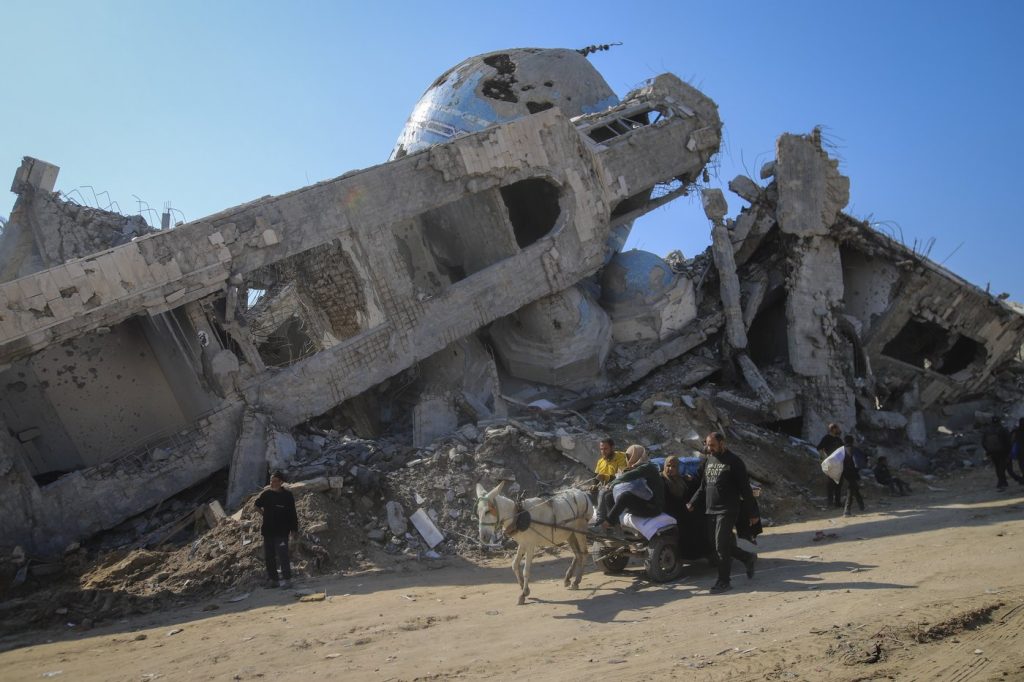DEIR AL-BALAH, Gaza Strip (AP) — In a significant development in the ongoing Gaza conflict, Hamas is poised to release three more Israeli hostages along with five Thai captives on Thursday. In exchange, Israel is set to release an additional 110 Palestinian prisoners. This marks the third hostage exchange since a ceasefire took effect earlier this month, following the violence that erupted after Hamas's attack on Israel on October 7, 2023.
The ceasefire aims to mitigate the impact of the devastating conflict between Israel and Hamas, characterized as one of the deadliest in the region's history. Despite a recent dispute regarding the order of hostages to be released, the ceasefire has remained intact. The Israeli hostages designated for release include Arbel Yehoud, 29; Agam Berger, 20; who was part of a group of female soldiers abducted during the October attack; and Gadi Moses, an elderly man aged 80. The identities of the Thai nationals awaiting release have yet to be disclosed.
Since the conflict began, foreign nationals, along with a substantial number of Israeli civilians and soldiers, were kidnapped during Hamas’s initial onslaught. Around 23 Thai hostages were freed during a previous ceasefire in November 2023, with eight Thais still reported as missing by Israel. Among the 110 Palestinian prisoners slated for release, 30 are serving life sentences tied to deadly attacks against Israelis. Additionally, Zakaria Zubeidi, a notable former militant leader, is included in this group.
Israel announced that Yehoud's planned release on Saturday had been delayed, leading to the postponement of border crossings into northern Gaza. However, a resolution mediated by the United States, Egypt, and Qatar has led to the agreement that Yehoud and two others will be freed on Thursday, with three more male hostages set for release on Saturday alongside additional Palestinian prisoners.
The ongoing conflict has resulted in widespread destruction and suffering. Following the truce, Israel has permitted Palestinians to return to northern Gaza, where extensive destruction has left many with nothing but rubble where their homes once stood. The current ceasefire phase requires Hamas to release a total of 33 hostages while Israel will free nearly 2,000 Palestinian prisoners in return. Reports have emerged that Hamas has acknowledged the deaths of eight hostages during this process.
The release of prisoners has been met with jubilation among Palestinians, who regard many of these individuals as martyrs in the fight against the prolonged Israeli occupation. Meanwhile, the Israeli military has begun reducing its presence in Gaza, allowing aid and humanitarian resources to flood into the region as civilians attempt to return to their remaining homes.
The ceasefire negotiations are expected to enter a second phase, which involves the release of remaining hostages and the possibility of an indefinite extension of the ceasefire. However, tensions remain as Israeli authorities continue to express their commitment to eradicating Hamas, which swiftly reestablished control over Gaza shortly after the ceasefire was declared. Furthermore, members of Prime Minister Benjamin Netanyahu’s far-right coalition are already signaling support for resuming military actions against Hamas.
Hamas has insisted that it will not release any remaining hostages without a complete cessation of the conflict and a full Israeli withdrawal from Gaza. The United States plays a pivotal role in the mediation efforts, providing both military and diplomatic backing to Israel throughout the conflict. U.S. President Donald Trump's administration has maintained strong support for Israel, even as it advocates for resolving the ongoing wars in the Middle East.
The toll of the conflict has been catastrophic, with Hamas’s initial attack resulting in approximately 1,200 deaths, primarily civilians, and the abduction of around 250 individuals. In retaliation, Israel’s military campaign in Gaza has resulted in over 47,000 Palestinian fatalities, as reported by Gaza’s Health Ministry, which struggles to provide comprehensive casualty figures. Meanwhile, the Israeli military claims to have killed over 17,000 militants, attributing civilian casualties to Hamas’s tactics of embedding military operations within civilian areas.
The destruction in Gaza has rendered extensive areas uninhabitable, with around 90% of the local population displaced multiple times and resorting to makeshift accommodations in tents and schools. This ongoing humanitarian crisis underlines the pressing need for both immediate aid and long-term solutions to the regional conflict.










